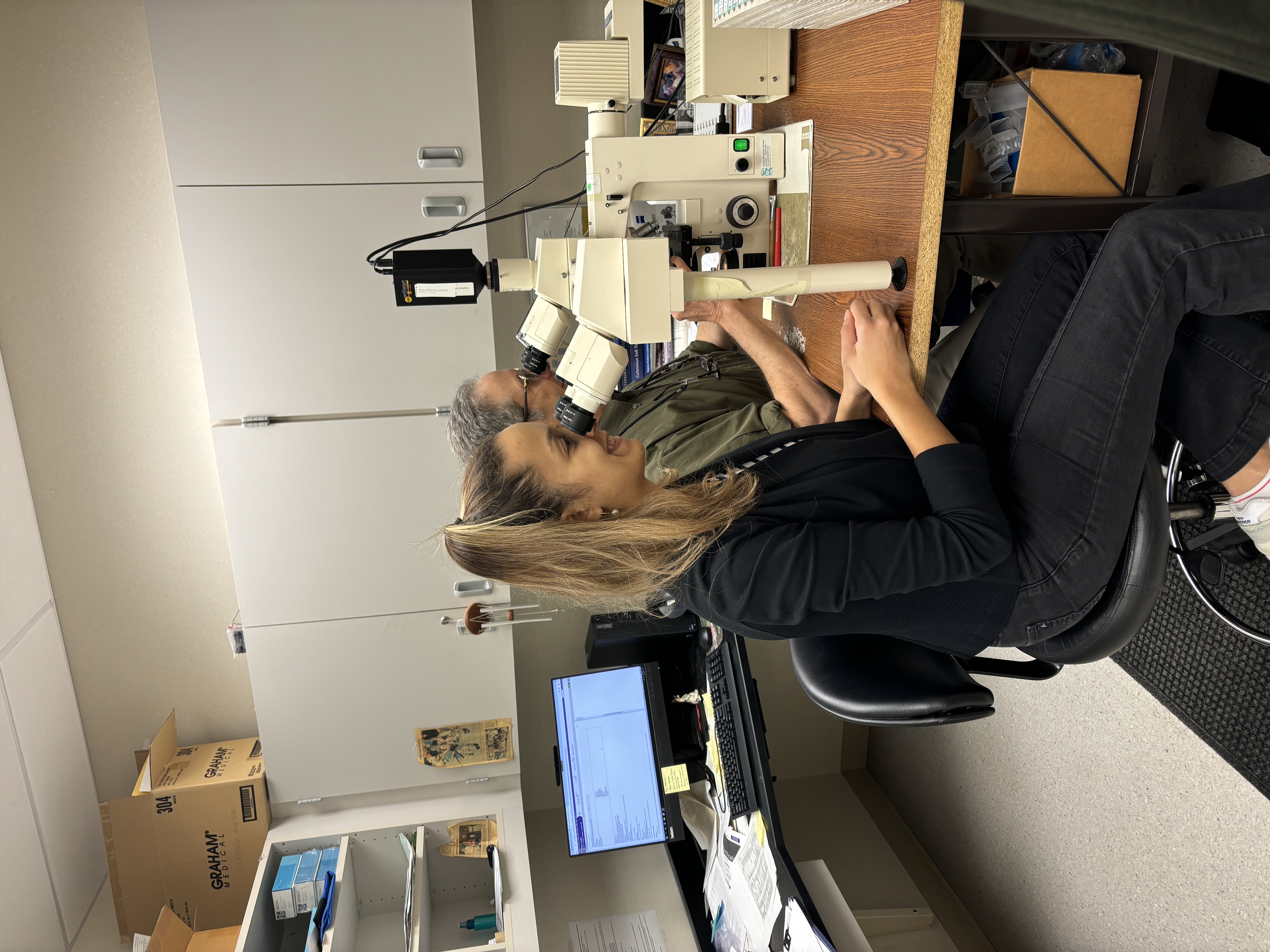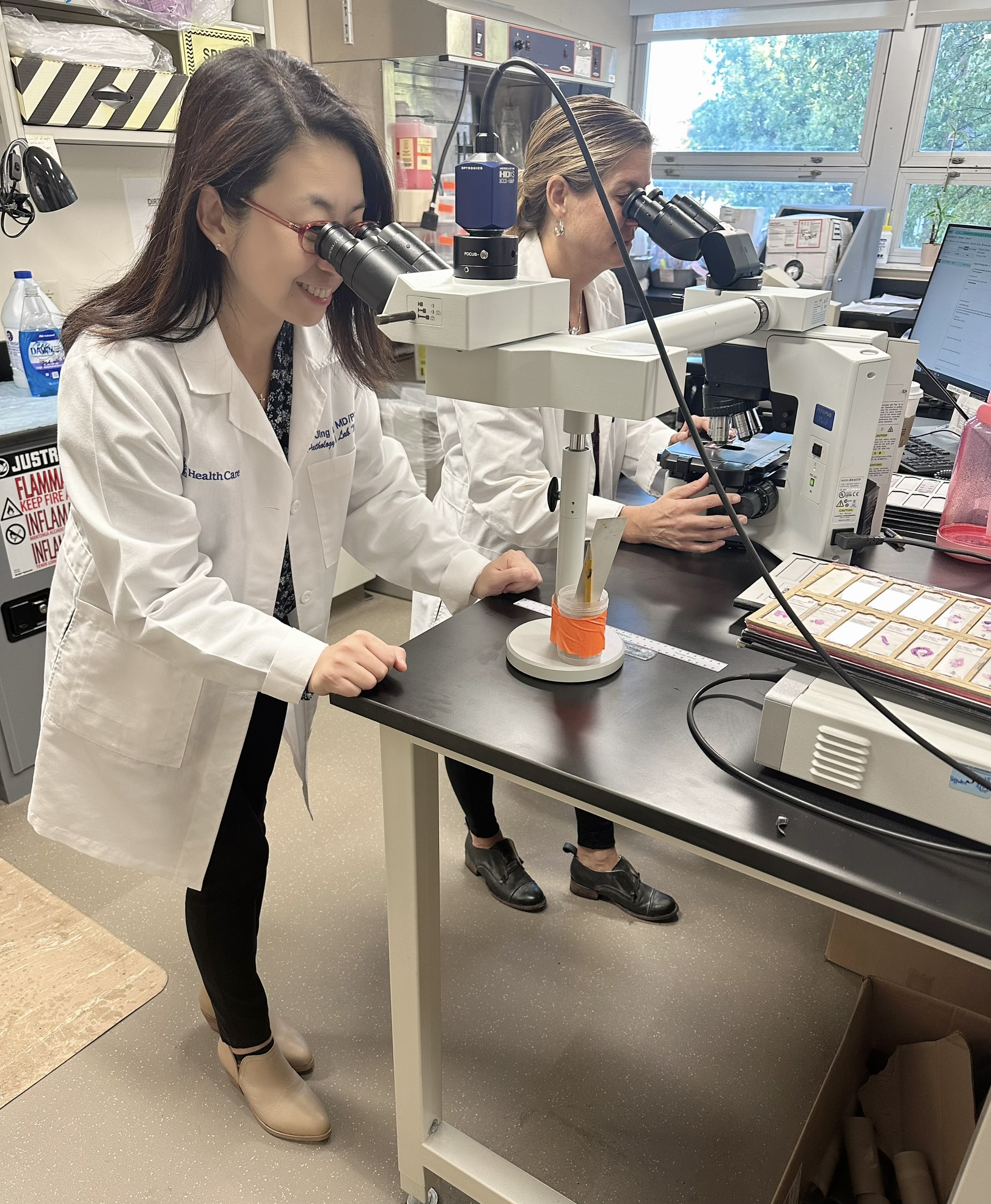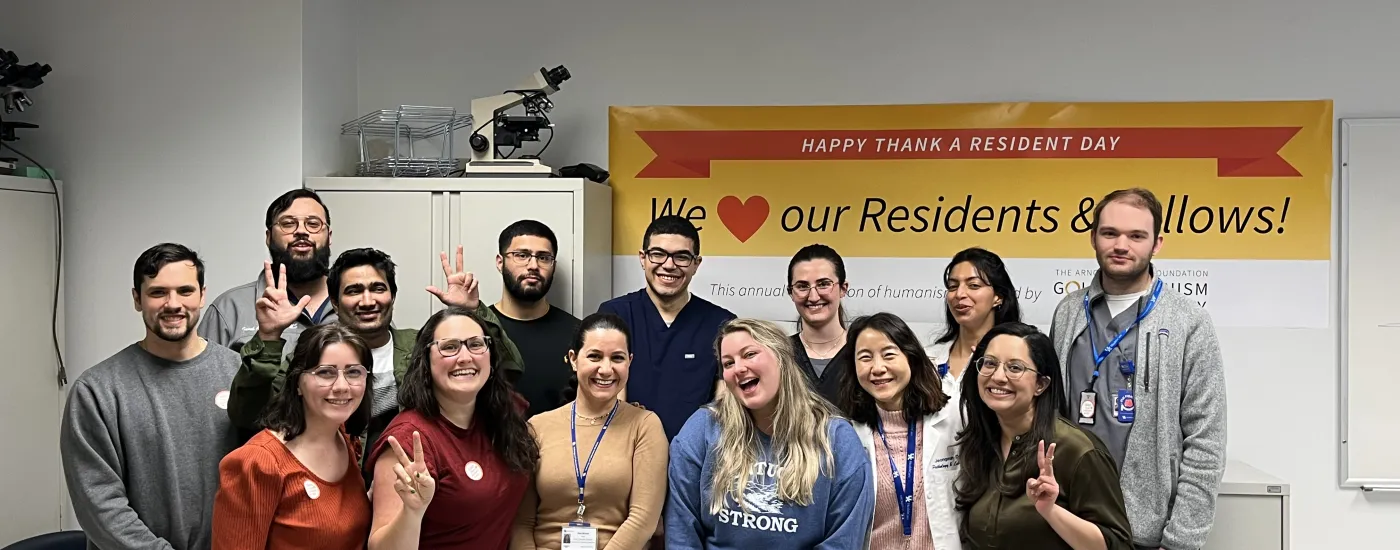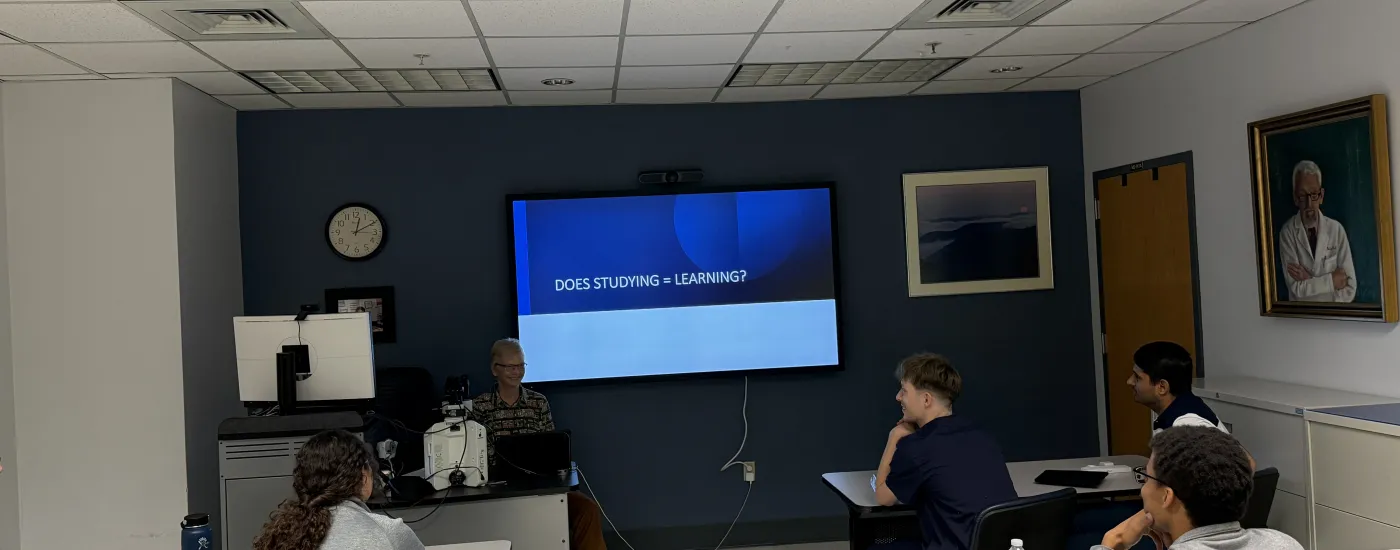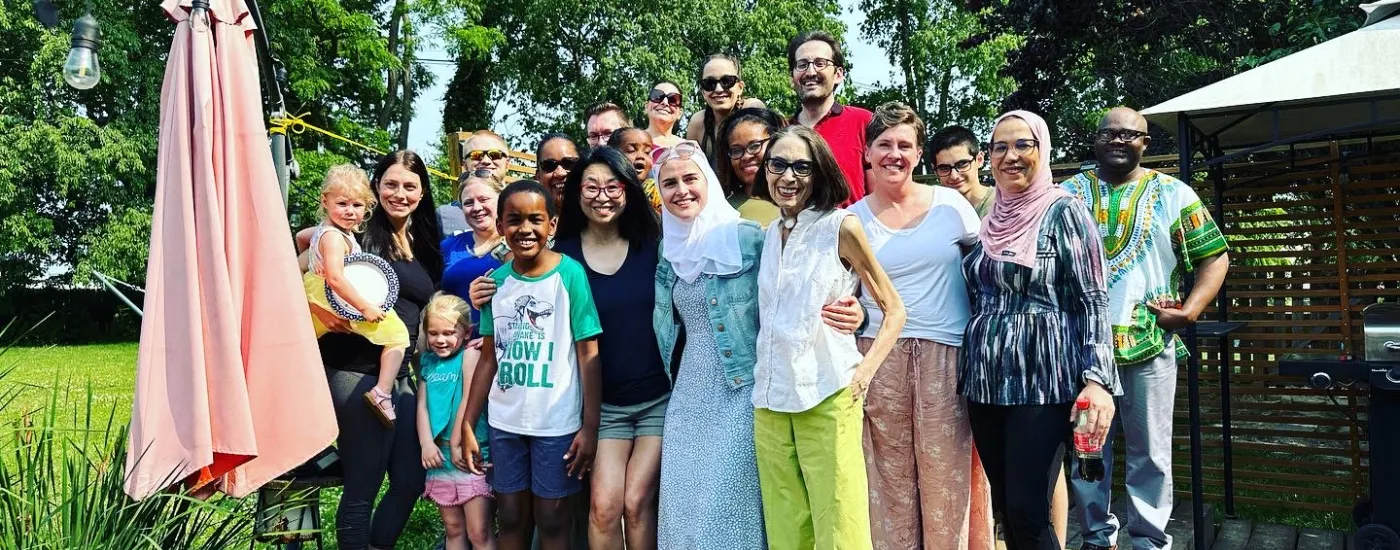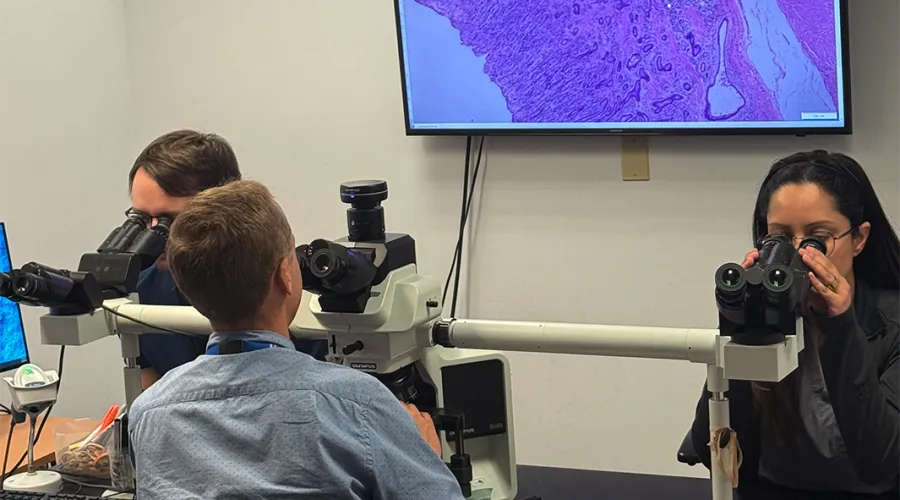
Residency
Program Leadership
Janna Neltner, MD
Residency Program Director
Nathan Shelman, MD
AP Associate Director, Residency Program
Aaron Shmookler, MD
CP Associate Director, Residency Program
Janna Neltner, MD
Vice Chair for Education
Sahar Nozad, MD
Department Quality and Safety Program Officer, SWARM
Leanna Brignola, MAed
Medical Education Specialist
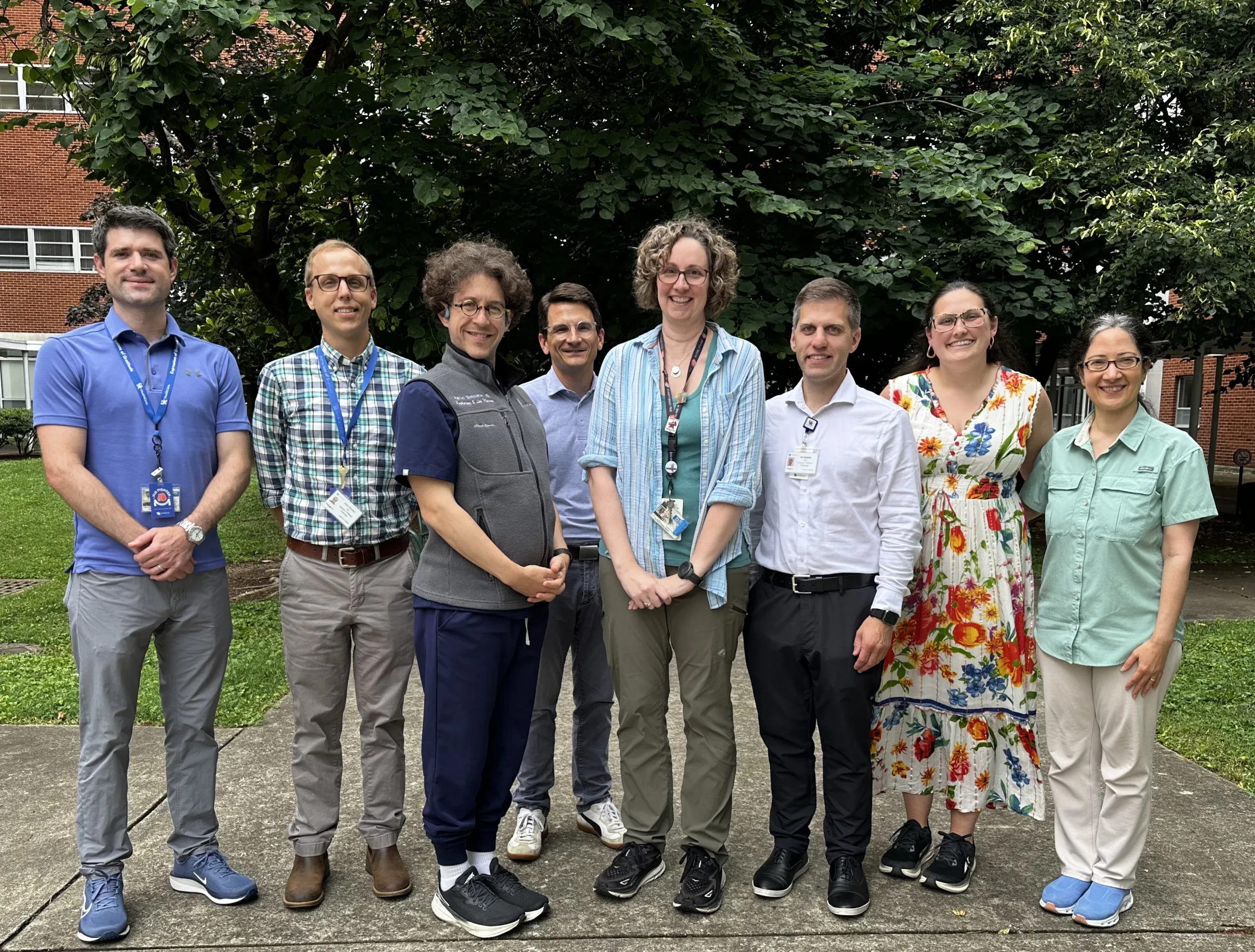
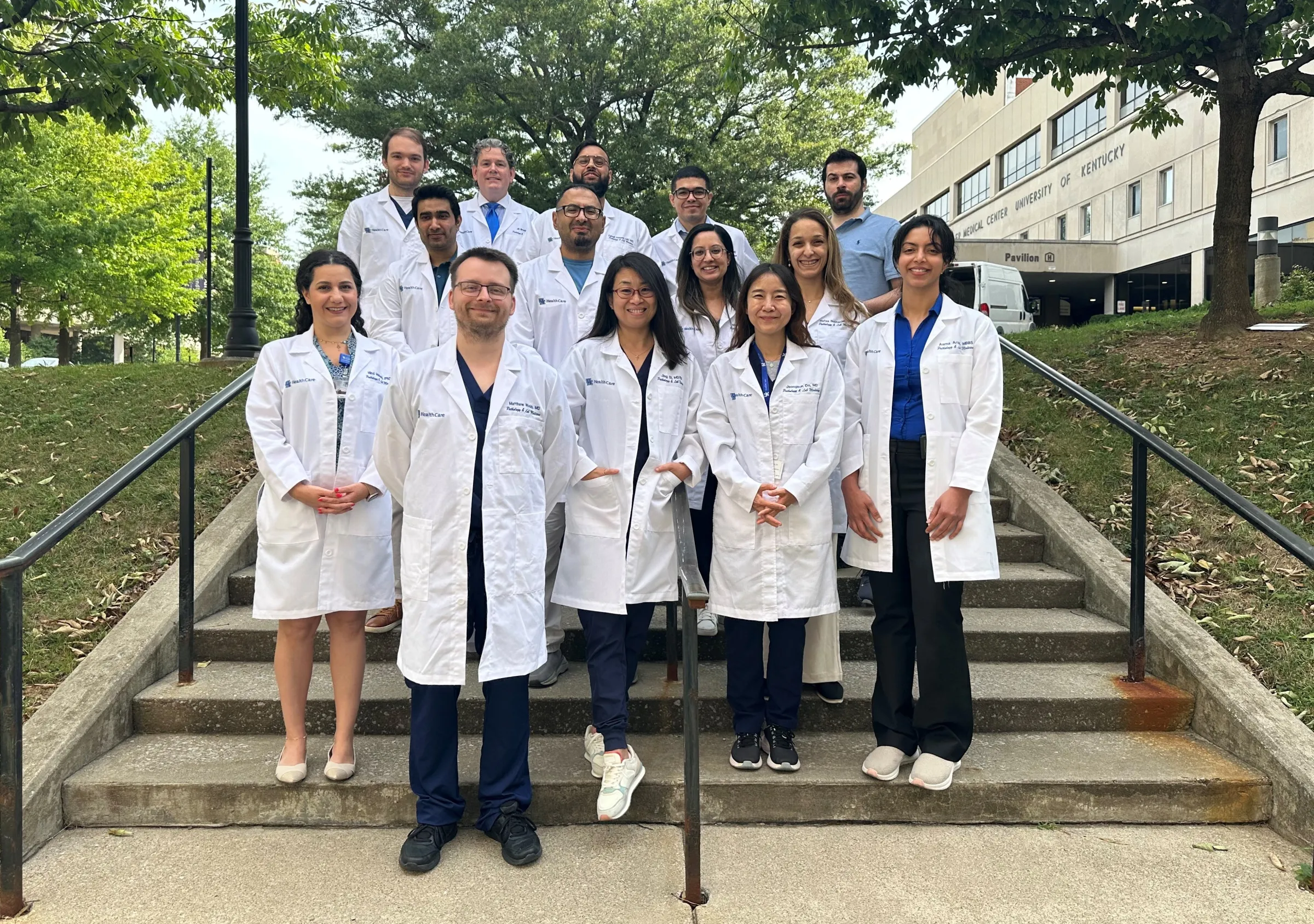
Second row: Drs. Talal Arshad, Ali Alhaidary, Maaza Jaan, Hafsa Nebbache
Third row: Drs. Ben Cushing, JB Bradley, Faisal Hassan, Mohamed Hussein, Nashwan Jabbour
Not pictured: Drs. Kalee Rusnak, Katie Bussing, Adeel Ashraf, Andre Ene
Educational Goals And Philosophy
AIMS
Our training program aims to develop in each resident personal diagnostic and management skills that afford competence, timeliness, accuracy, and built-in lifelong improvement applicable to all aspects of anatomical pathology and laboratory medicine.
CONTINUOUS LEARNING
By a graduated and progressive exposure within anatomical pathology and laboratory medicine rotations, with a corresponding evaluation of performance, the resident will develop lifelong habits of self-directed learning and critical self-evaluation that will allow for a happy, satisfied lifestyle both inside and outside the laboratory. Throughout residency a teaching role is required. This fosters both content mastery and the important role of educator that the pathologist plays in the private practice, academic, and industry settings.
RESEARCH
Research is a natural part of pathology, as an inquiring, open, and unbiased mind is essential to the diagnostic role of the pathologist. While a research project is not a curricular requirement, it is encouraged as it stimulates the discipline, inquisitiveness, and lifelong commitment to discovery required of this profession.
TEAM APPROACH
A team approach to work, interaction with and knowledge of others within the department at all levels, and enthusiasm for all tasks is encouraged throughout the training program. Monthly and annual evaluations are aimed at being positive and reinforcing with a view to solving any problems as they arise and maintaining an open-door policy of communication with all faculty at all times.
Eligibility and Applications
Graduating medical students are accepted directly into the residency training program at the College of Medicine but must apply through the NRMP via ERAS (Electronic Residency Application Service). Graduate physicians may also enter the program after completion of an internship or other postgraduate training; such appointments do not always involve the NRMP. Although appointments are for one year at a time, a resident whose work is satisfactory can anticipate completion of the entire four-year program. The department can accommodate a total of twenty-two house officers. Residents in their second postgraduate year and beyond must be licensed to practice in Kentucky. The University pays fees for Kentucky State Medical licensure. Applicants must pass USMLE Step I and Step II (or COMLEX) and have at least three recommendation letters. Applicants must have graduated from medical school within the last 10 years. For international medical graduate applicants, eligibility for J-1 student visa status is strongly preferred because of institutional requirements. In addition, the university requires ECFMG certification prior to your application being complete; at least three months of US clinical experience are also required for consideration. Potential candidates will be invited to interview via Zoom/in-person as dictated by LCME and ACGME recommendations for the current applications cycle. The application deadline for our program is Oct. 15; however, applicants are invited to interviews on a first-come, first-serve basis.
For more information about our Graduate Medical Education office click here. This includes GME stipends, benefits, policy/procedures manual, and more.
Outline of the Program
All our residents train in both anatomic pathology and clinical pathology (AP/CP). Each year of training is divided equally between anatomic pathology and laboratory medicine with every year divided evenly into 13 four-week blocks. Orientation lectures occur in the first eight week of resident training which includes available resources, rules and regulations and basic histology lectures (see image below).
Graduated Responsibility
Our program offers a well-structured orientation that gradually prepares incoming residents for independent service. The orientation spans four dedicated blocks, each designed to build confidence and foundational skills across major pathology disciplines.
- Autopsy Orientation Month: First year resident is paired with a second-year resident and learn the full process—from obtaining consent and completing paperwork to performing the autopsy, taking samples, reviewing slides, and writing the final report.
- Surgical Pathology Orientation Month (Bridge): Residents follow the schedule of a Pathology Assistant for the first three weeks, learning grossing in a structured way—starting from smaller specimens and progressing to complex cancer cases. Each resident completes at least three specimens per organ. During the final week, junior residents shadow senior resident to learn case previewing and documentation in Epic.
- Hematopathology Orientation Month (Heme Reading): The first two weeks focus on reading and reviewing foundational hematopathology materials (including recorded lectures on Canvas). In the following two weeks, residents are paired with senior resident to gain hands-on exposure before starting the full hematopathology rotation.
- Cytopathology Orientation Month (Cyto. Reading): Similarly, residents spend the first two weeks building foundational cytopathology knowledge, followed by two weeks paired with a senior resident to understand workflows and prepare for the service rotation.
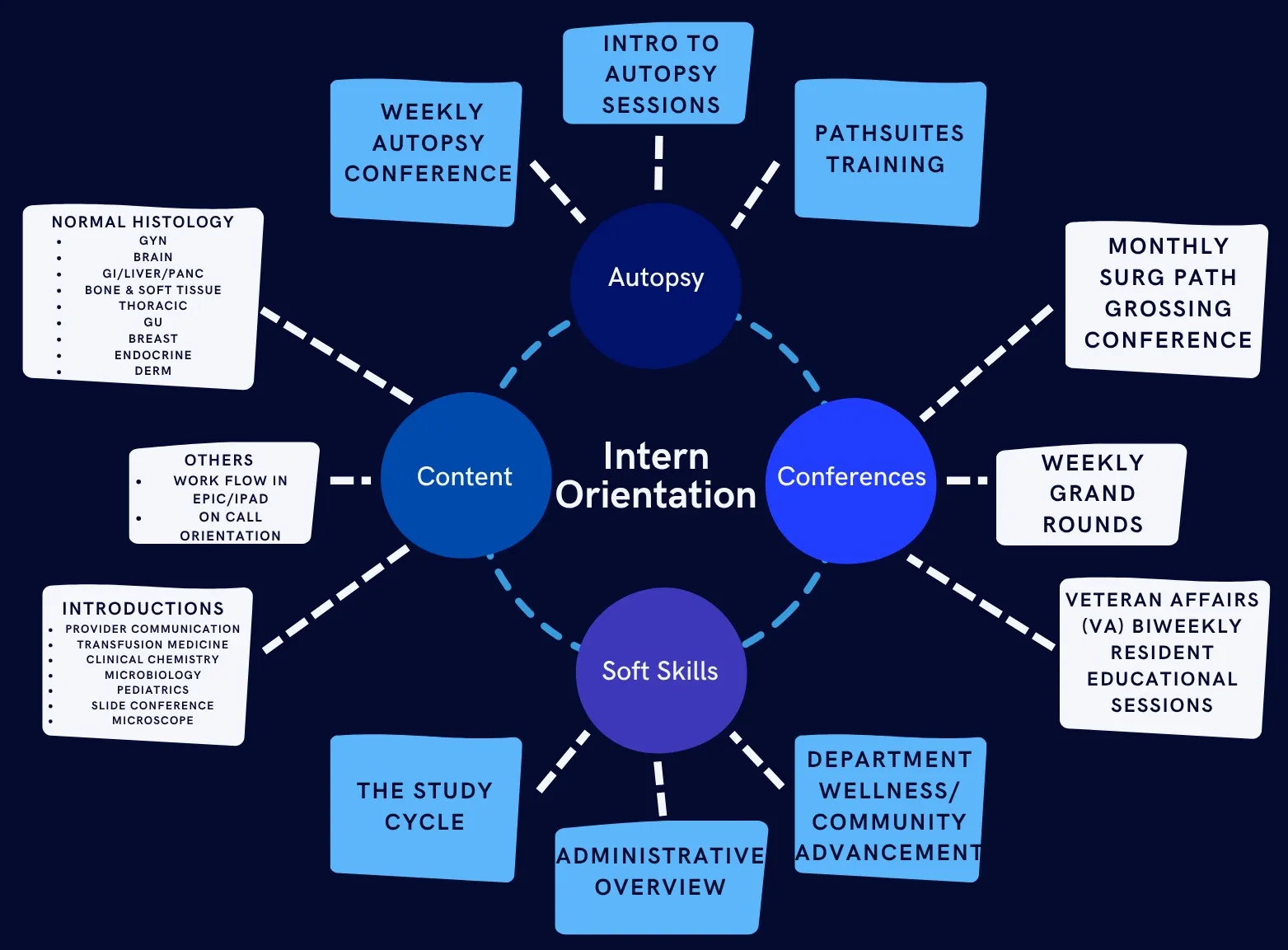
| PGY–Year | PGY–1 | PGY–2 | PGY–3 | PGY–4 |
|---|---|---|---|---|
| Block 1 | Autopsy-Orientation | Autopsy | Heme | VA Surg Path |
| Block 2 | Autopsy | Chemistry | Surg Path | Cytology |
| Block 3 | Autopsy | Blood Bank | VA Surg Path | Surg Path |
| Block 4 | Chemistry | Heme | Blood Bank | Acting Fellowship |
| Block 5 | Intro to Heme-Orientation | Cytology-Orientation | Lab Management | Good Sam |
| Block 6 | Heme | Cytology | Surg Path | Elective |
| Block 7 | Surg Path-Orientation | Elective | Neuropath | Informative |
| Block 8 | Surg Path | Microbiology | Molecular Diagnostics | Heme |
| Block 9 | Surg Path | Microbiology | Molecular Diagnostics | Blood Bank |
| Block 10 | Surg Path | Surg Path | Surg Path | Microbiology |
| Block 11 | Blood Bank | Surg Path | Cytology | Elective |
| Block 12 | VA Surg Path | VA Surg Path | Chemistry | BPTP Management |
| Block 13 | Forensics | Surg Path | Dermpath | Elective |
Anatomic Pathology (AP) Electives
- Surgical Pathology – Good Samaritan Hospital
- Neuropathology
- Anatomic and Clinical Pathology – St. Clair Hospital
- Breast Pathology
- Bone and Soft Tissue Pathology
- Gynecologic (GYN) Pathology
- Placental Pathology
- Gastrointestinal (GI) Pathology
- Oral Pathology
- Dermatopathology
- Renal Pathology and Electron Microscopy
- Transplant Pathology
Clinical Pathology (CP) Electives
- Hematopathology
- Histocompatibility and Immunogenetics (HLA)
- Electron Microscopy
Other Electives
- Research
- Any other core rotation can be taken as an elective (Surg Path, Micro, etc)
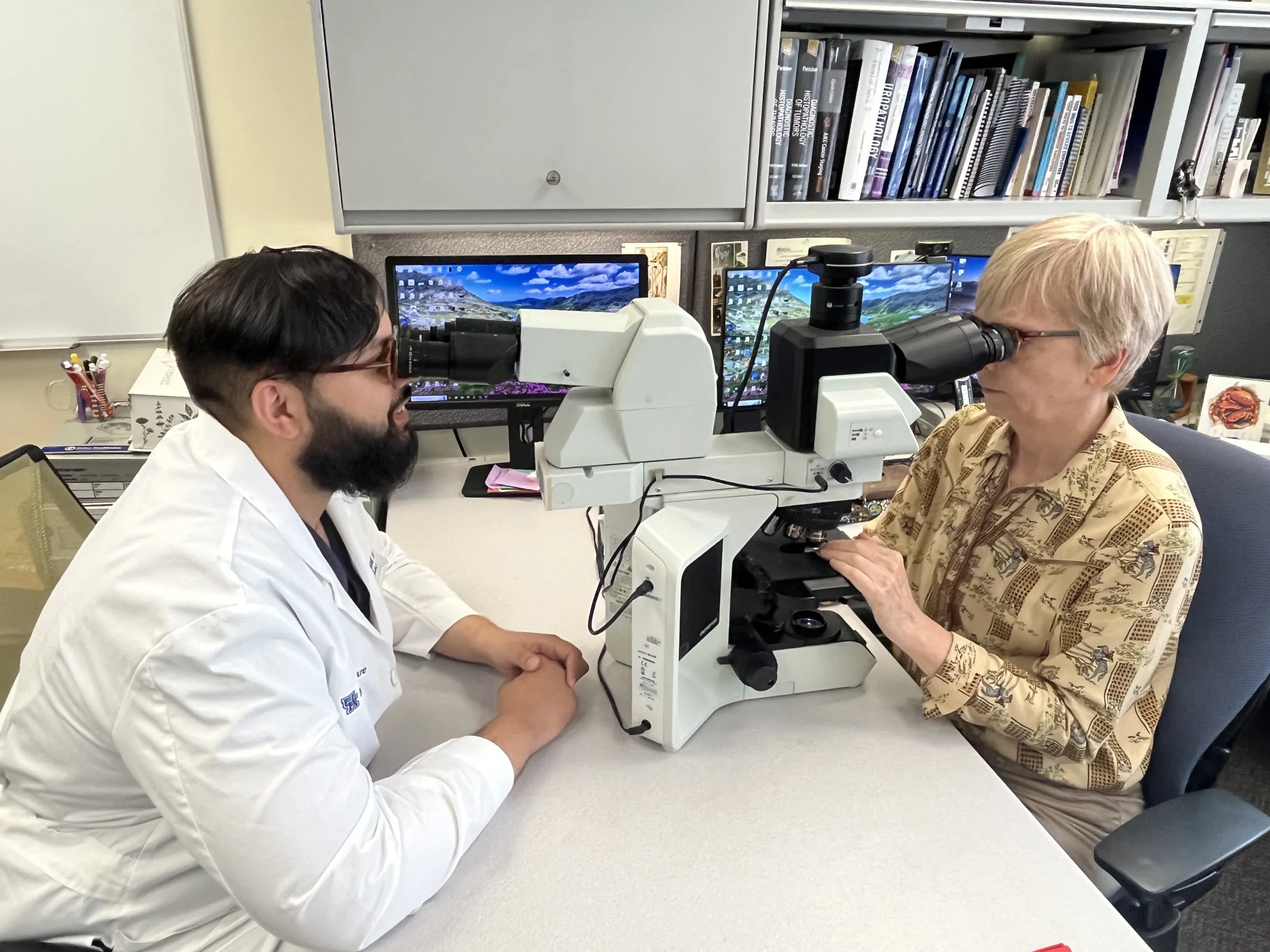
ANATOMIC PATHOLOGY (26-30 MONTHS)
- Surgical Pathology: 16
- Cytopathology: 4
- Autopsy: 4
- Neuropathology: 1
- Anatomic Electives (Dermatopathology, Outside Cases, St. Claire, Transplant Pathology, Renal Pathology, Research): 2 - 4
ANATOMIC PATHOLOGY (26-30 MONTHS)
- Surgical Pathology: 16
- Cytopathology: 4
- Autopsy: 4
- Neuropathology: 1
- Anatomic Electives (Dermatopathology, Outside Cases, St. Claire, Transplant Pathology, Renal Pathology, Research): 2 - 4
CLINICAL PATHOLOGY (18-20 MONTHS)
- Transfusion Medicine: 4
- Clinical Chemistry: 4
- Hematopathology: 5
- Microbiology: 3
- Lab Management: 1
- Molecular Diagnostics: 2
- Clinical Electives: 1 - 3
CLINICAL PATHOLOGY (18-20 MONTHS)
- Transfusion Medicine: 4
- Clinical Chemistry: 4
- Hematopathology: 5
- Microbiology: 3
- Lab Management: 1
- Molecular Diagnostics: 2
- Clinical Electives: 1 - 3
FACILITIES AND MATERIALS
The 945-bed Albert B. Chandler University Hospital is located on the main campus of the University of Kentucky and boasts some of the following:
- 100 autopsies annually
- over 30,000 surgical specimens annually
- 1500 bone marrows annually
- 16,000 cytological studies annually
- 730 medical legal autopsies annually
- 1400 cytogenetic cases annually
- 7000 professional laboratory cases annually
- 11,000 immunomolecular cases annually
FACILITIES AND MATERIALS
The 945-bed Albert B. Chandler University Hospital is located on the main campus of the University of Kentucky and boasts some of the following:
- 100 autopsies annually
- over 30,000 surgical specimens annually
- 1500 bone marrows annually
- 16,000 cytological studies annually
- 730 medical legal autopsies annually
- 1400 cytogenetic cases annually
- 7000 professional laboratory cases annually
- 11,000 immunomolecular cases annually


